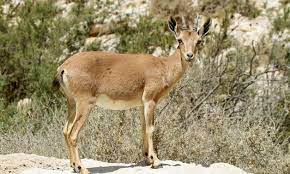Welcome to the mesmerizing landscapes of Egypt, where the enchanting allure of the desert is home to a myriad of unique and diverse wildlife. In this article, we embark on a journey to explore the delicate balance of Egypt’s desert ecosystems and shed light on the endangered species that call these arid lands their home. Join us in understanding the importance of preserving these extraordinary creatures and the steps we can take to ensure their survival.
I. The Rich Biodiversity of Egypt’s Deserts:
Diverse Habitats:
Egypt’s deserts, including the Sahara and Arabian deserts, boast an astonishing array of ecosystems, from sand dunes to rocky plateaus. Despite the harsh conditions, a surprising variety of wildlife has adapted to thrive in these environments.
Iconic Desert Fauna:
Explore the lives of iconic desert species such as the Fennec Fox, Sand Cat, and Nubian Ibex. Each of these creatures has unique adaptations that enable them to survive in the extreme temperatures and limited resources of the desert.
II. Threats to Desert Wildlife:
Habitat Fragmentation:
The expanding human footprint, coupled with infrastructure development, has led to the fragmentation of desert habitats. This poses a significant threat to the natural migration patterns and territorial ranges of many species.
Climate Change Impact:
The effects of climate change, including rising temperatures and changing precipitation patterns, directly impact the delicate balance of desert ecosystems. Species that have evolved to thrive in specific conditions face new challenges as their environment shifts.
III. Endangered Species in the Egyptian Desert:
One of the most iconic endangered species in the Egyptian desert is the Nubian ibex (Capra nubiana). This wild goat is found in the rocky mountains of southern Egypt and northern Sudan. Its population has declined drastically due to habitat loss, hunting, and competition with domestic goats. According to recent estimates, there are only around 1,500 Nubian ibex left in the wild. Conservation efforts have been focused on protecting their habitat, reducing poaching, and captive breeding programs.
Another endangered species in the Egyptian desert is the sand cat (Felis margarita). This small wildcat is found in the sandy deserts of North Africa and the Middle East. Its population has declined due to habitat loss, hunting, and competition with domestic cats. Sand cats are also threatened by climate change as their burrows are being destroyed by sandstorms. Conservation efforts have been focused on protecting their habitat, reducing poaching, and captive breeding programs.
The Egyptian wild ass (Equus africanus) is a large wild donkey that is found in the desert regions of Egypt and Sudan. Its population has declined due to habitat loss, hunting, and competition with domestic donkeys. The wild ass is also threatened by climate change as its water sources are drying up due to droughts. Conservation efforts have been focused on protecting their habitat, reducing poaching, and captive breeding programs.
The Fennec fox (Fennecus zerda) is a small fox that is found in the sandy deserts of North Africa. Its population has declined due to habitat loss, hunting, and competition with domestic cats and dogs. Fennec foxes are also threatened by climate change as their burrows are being destroyed by sandstorms. Conservation efforts have been focused on protecting their habitat, reducing poaching, and captive breeding programs.
The Addax antelope (Addax nasomaculatus) is a large antelope that is found in the sandy deserts of North Africa. Its population has declined drastically due to habitat loss, hunting, and competition with domestic livestock. Addax antelopes are also threatened by climate change as their water sources are drying up due to droughts. Conservation efforts have been focused on protecting their habitat, reducing poaching, and captive breeding programs.
In addition to these species, there are many other endangered species in the Egyptian desert such as the Arabian oryx (Oryx leucoryx), Sand gazelle (Gazella subgutturosa), Desert hedgehog (Paraechinus aethiopicus), Desert monitor lizard (Varanus griseus), Desert fringed-lipped frog (Arthroleptis xenodactylus), and many more.
Conservation Efforts:
Protected Areas:
Learn about the initiatives and protected areas in Egypt, such as the Wadi El Rayan Protected Area and the Zaranik Protectorate, aimed at preserving the natural habitats and biodiversity of the desert.
Community Engagement:
Discover how local communities and conservation organizations are working together to implement sustainable practices, promote responsible tourism, and raise awareness about the importance of preserving desert wildlife.
V. How You Can Help:
Support Conservation Organizations:
Highlight the role of local and international conservation organizations working to protect endangered species in the Egyptian desert. Encourage readers to contribute or volunteer.
Responsible Tourism:
Provide tips for responsible tourism, emphasizing the importance of respecting wildlife and their habitats. Suggest eco-friendly tour options offered by Top Ten Egypt Tours that prioritize
As we traverse the vast expanse of Egypt’s deserts, let us remember the fragile ecosystems and the magnificent creatures that inhabit them. By understanding the challenges they face and actively participating in conservation efforts, we can ensure that future generations continue to marvel at the beauty and diversity of the Egyptian desert wildlife. Join Top Ten Egypt Tours in the commitment to protect and preserve these precious treasures for generations to come.



Comment (0)